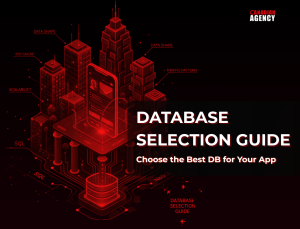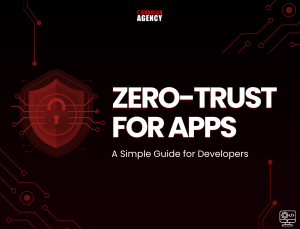Why Use Low-Code and No-Code Tools for Your MVP?
With no-code and low-code development platforms, users can create apps with visual interfaces, drag-and-drop functionality, and pre-built templates. These tools offer several advantages:
- Faster Development reduces time-to-market by eliminating the need for traditional coding.
- Lower Costs avoid hiring expensive developers in the early stages.
- Easy Iterations make quick changes based on user feedback.
- Accessibility: No technical expertise required, making it ideal for solo founders and small teams.
Best No-Code & Low-Code Platforms for MVP Development
- Webflow – Best for Custom Websites & Web Apps
- Key Features:
- Drag-and-drop website builder with advanced design control.
- CMS for dynamic content management.
- Integrations with third-party tools like Zapier and Airtable.
- Hosting and domain management included.
- Best For: Startups needing a visually stunning, responsive website without coding.
- Pricing: Starts at $14/month (Basic Plan).
- Bubble – Best for Web Applications & SaaS Products
- Key Features:
- Full-stack web app development without code.
- Database integration and user authentication.
- API connections for extended functionality.
- Scalable for growing startups.
- Best For: Entrepreneurs building web-based SaaS products or marketplaces.
- Pricing: Free plan available; paid plans start at $29/month.
- Adalo – Best for Mobile Apps
- Key Features:
- No-code mobile app builder for iOS and Android.
- Pre-built templates for faster development.
- Backend integrations with Firebase and Airtable.
- Push notifications and in-app purchases.
- Best For: Startups needing a cross-platform mobile app quickly.
- Pricing: Starts at $36/month.
- Glide – Best for Data-Driven Apps
- Key Features:
- Turns spreadsheets (Google Sheets, Airtable) into apps.
- Real-time data syncing.
- Offline functionality.
- Customizable UI with minimal effort.
- Best For: Businesses requiring internal tools or customer-facing apps powered by data.
- Pricing: Free plan available; paid plans start at $25/month.
- Softr – Best for Membership & Client Portals
- Key Features:
- No-code platform for building membership sites and client dashboards.
- Airtable integration for dynamic content.
- Payment gateway support (Stripe, PayPal).
- Role-based access control.
- Best For: Startups offering subscription-based services or online courses.
- Pricing: Free plan available; paid plans start at $49/month.
- Zapier – Best for Workflow Automation
- Key Features:
- Connects multiple apps (5,000+ integrations).
- Automates repetitive tasks without coding.
- Conditional logic for complex workflows.
- Best For: Businesses looking to automate processes between different tools.
- Pricing: Free plan available; paid plans start at $19.99/month.
- Airtable – Best for Database-Backed Apps
- Key Features:
- Spreadsheet-database hybrid with powerful filtering.
- Custom views (Kanban, Calendar, Gallery).
- API and automation support.
- Best For: Startups needing structured data management with app-like functionality.
- Pricing: Free plan available; paid plans start at $10/month.
- OutSystems – Best for Enterprise-Grade Applications
- Key Features:
- Low-code platform for scalable, high-performance apps.
- AI-assisted development.
- Strong security and compliance features.
- Best For: Larger startups or enterprises needing complex, scalable solutions.
- Pricing: Custom pricing (contact sales).
- Thunkable – Best for Advanced Mobile Apps
- Key Features:
- No-code mobile app development with AI enhancements.
- Live testing and instant updates.
- Native app performance.
- Best For: Founders needing feature-rich mobile apps without coding.
- Pricing: Free plan available; paid plans start at $20/month.
- Retool – Best for Internal Business Tools
- Key Features:
- Low-code platform for internal dashboards and admin panels.
- Pre-built UI components.
- SQL and API integrations.
- Best For: Startups building custom CRM, inventory, or analytics tools.
- Pricing: Free plan available; paid plans start at $10/user/month.
How to Choose the Right No-Code/Low-Code Tool for Your MVP?
Selecting the ideal platform requires careful consideration of several key factors:
- Define Your MVP’s Core Features: Start by outlining essential functionalities your product needs to validate your business idea. Focus on solving one key problem exceptionally well.
- Consider Scalability: Evaluate whether the platform can handle increased users, data loads, and feature additions as your startup grows.
- Check Integration Capabilities: Ensure seamless connectivity with payment processors, CRMs, marketing tools, and other services you’ll need.
- Evaluate Pricing Structure: Compare subscription costs against included features, noting any potential hidden fees for scaling.
- Test Usability Thoroughly: Take advantage of free trials to assess the learning curve and interface intuitiveness before committing.
Conclusion
As we move through 2025, the landscape of product development continues to evolve dramatically, with no-code and low-code platforms emerging as game-changers for entrepreneurs and startups. These innovative tools have reached new levels of sophistication, enabling founders to build, test, and launch fully functional MVPs without the traditional barriers of technical expertise or large development budgets.
The power of modern no-code solutions lies in their ability to democratize product creation. Whether you’re developing a customer-facing web application, a mobile app, an e-commerce platform, or an internal business tool, today’s platforms offer drag-and-drop interfaces, pre-built templates, and seamless integrations that make professional-grade development accessible to everyone. This shift has fundamentally changed how startups validate ideas, allowing them to go from concept to market in weeks rather than months. One of the most significant advantages of using no-code/low-code tools in 2025 is cost efficiency. By eliminating the need for expensive developer teams in the early stages, founders can allocate resources to market research, customer acquisition, and iterative improvements instead. Additionally, these platforms support real-time collaboration, making it easier for distributed teams to work together seamlessly.
Another key benefit is scalability. What begins as a simple MVP can grow into a robust, enterprise-ready solution thanks to cloud hosting, API integrations, and modular design features built into leading platforms. This flexibility ensures that businesses aren’t locked into rigid systems as they expand. For entrepreneurs looking to stay competitive, adopting no-code/low-code development is no longer just an option—it’s a strategic necessity. These tools not only accelerate time-to-market but also reduce risk by allowing for rapid prototyping and user feedback integration.
The message is clear: in 2025, you don’t need to be a programmer to build a successful product. By choosing the right no-code or low-code platform for your specific needs, you can turn your vision into reality faster than ever before, focus on growth, and outpace competitors still relying on traditional development methods. The future of startup innovation is here, and it’s accessible to anyone with an idea and the willingness to explore these transformative tools.




